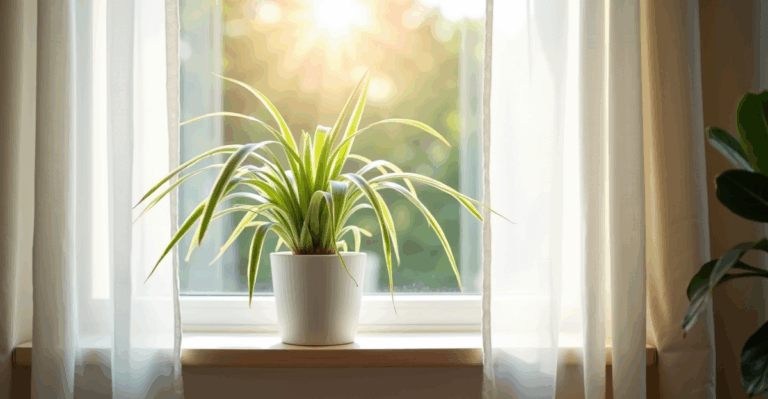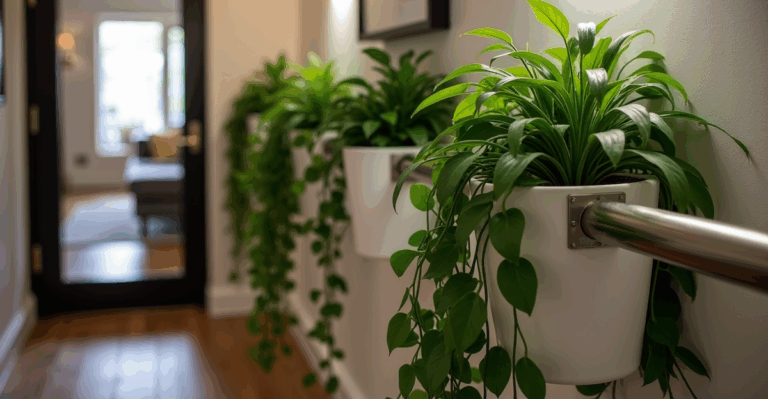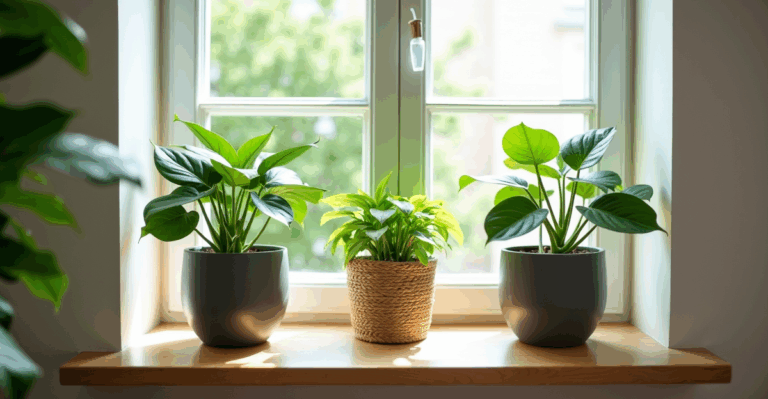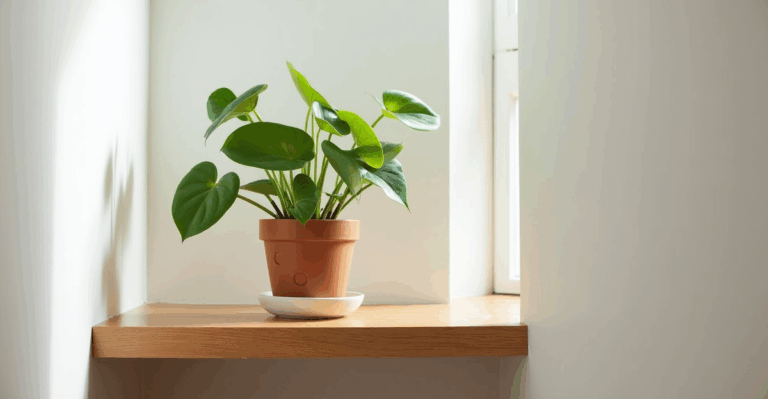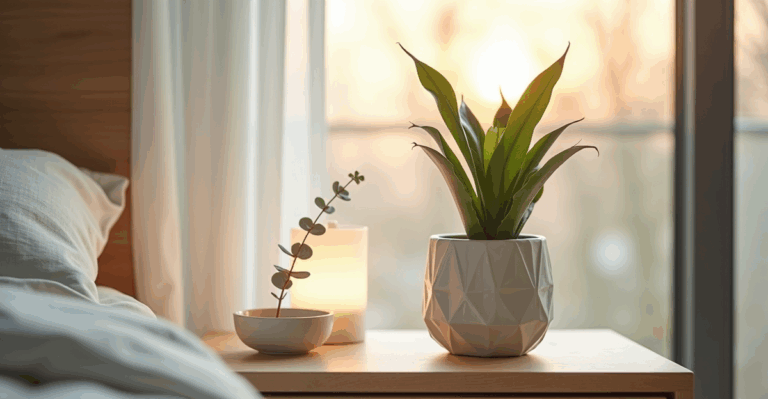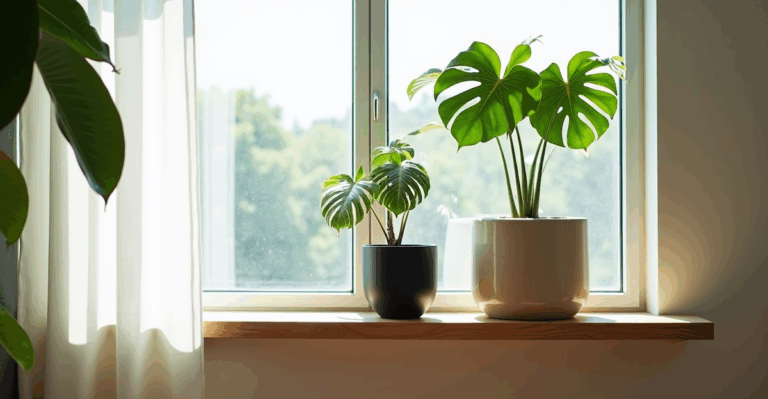Snake Plant Styling for South Windows Without Natural Light (Grow Light Guide)
Picture this: you’ve finally scored that dreamy, sun-drenched south-facing window in your apartment, but your building’s east wing blocks all natural light after 10 a.m. You’ve got a sturdy snake plant (Sansevieria trifasciata) thriving on your bookshelf next to the window, but it’s looking a bit leggy and pale. You’ve seen those sleek, minimalist setups with plants bathed in golden-hour light on Instagram—but yours is just… a plant next to a window. The problem? You’re trying to use the window’s potential without the light. We’ve been there. The fix isn’t about moving your plant to the window—it’s about creating the light at the window, then styling the whole thing like a curated art piece, not an afterthought.
Snake plants are legendary for surviving low light, but they thrive in bright, indirect light. Without it, they stretch for the sun, lose their vibrant color, and their growth slows. The solution isn’t just adding a grow light—it’s integrating it seamlessly into your window display so it feels intentional, not technical. We’ve tested hundreds of setups in our shop and homes, and the biggest mistake we see? Using a generic, bulky grow light that clashes with your aesthetic or creates hot spots that burn the plant. Let’s fix that.
Grow Lights That Don’t Feel Like a Bulky Afterthought
Most people grab the first LED panel they find online—a rigid, rectangular unit that looks like it belongs on a garage workbench. But for a south window display, your light source should be part of the design. Think of it like a modern sconce or a sculptural lamp. We prefer adjustable, slim-profile LED panels (like the Feit Electric or GROW-LED) mounted above the window ledge or tucked behind sheer curtains. This way, the light radiates downward across the plant, mimicking the gentle spread of natural sun. Avoid hanging lights directly over the plant—this creates a harsh spot, like a spotlight on a stage. Instead, angle them slightly outward so the light wraps around the snake plant’s leaves, highlighting its texture and shape. The goal: the light should be a subtle, warm glow you barely notice until you see how lush the plant looks.
Real-world tweak: If your window has a narrow ledge, mount the light on the wall above the window frame (not on the ledge itself). This keeps the light source centered over the plant while freeing up the windowsill for books or small sculptures. We’ve had customers use magnetic mounts for easy repositioning as seasons change.
Watering Like a Snake Plant Whisperer (No Drainage Needed)
Snake plants are desert survivors—they hate soggy roots. In low-light conditions (or with grow lights running for 12+ hours), they use water much slower than they would under natural sun. Overwatering is the #1 killer here, often disguised as “I’m giving it more light, so it needs more water.” Spoiler: it doesn’t. Let the top 2–3 inches of soil dry out completely between waterings. Stick your finger in: if it’s cool and damp, wait another day. When you do water, give it a slow, deep soak until water drains out the bottom (if using a pot with drainage holes), then empty the saucer. If you’re using a self-watering pot or LECA (clay pebbles), skip the deep soak—just fill the reservoir to the recommended level.
Why this matters with grow lights: The constant light makes the plant think it’s growing faster, so it’ll absorb water quicker. But its roots aren’t actually moving through more soil, so you’ll drown it if you water on a regular schedule. We’ve seen snake plants wilt within 48 hours after a beginner watered them “as usual” while using a new grow light. Pro tip: mark your watering days on a sticky note and adjust back as the plant adjusts to the light.
Styling Your Grow Light Setup as a Feature, Not an Apology
This is where most “plant people” get stuck—they see the grow light as a necessary tool, not a styling element. But a well-chosen light can be a focal point. We keep it simple: a single, clean-lined LED panel (no strings, no clunky cords) mounted discreetly, paired with a neutral-toned planter that lets the plant’s bold leaf patterns shine. For a south-facing window, lean into the “desert modern” vibe: think matte terracotta, smooth concrete, or even a minimalist 3D-printed planter in a soft gray. Avoid dark colors—they absorb light and make the space feel cramped.
The styling hack: Place the snake plant slightly off-center on the windowsill (not dead center), with a small stack of books or a single sculptural ceramic bowl behind it. This creates depth and makes the grow light’s glow feel intentional, not clinical. If your window has a narrow ledge, use a wall-mounted plant hook (like our favorite hidden one) to dangle a smaller snake plant above the main display, catching the light from an angle. Suddenly, it’s a curated vignette—not a “plant with a light.”
Why Your Potting Mix and Planter Choice Matter More Than You Think
Snake plants love well-draining mixes (like 50% potting soil + 50% pumice or perlite), but under grow lights, this becomes critical. Wet soil + low light = root rot. That’s why we always use pots with drainage holes—no exceptions. Cachepots (decorative outer pots) are fine, but never place a drainage pot inside a non-draining cachepot (like a ceramic bowl without holes). The soil stays wet, and the plant suffers. If you’re using a self-watering pot, ensure it has a clear reservoir level indicator so you don’t accidentally overfill it.
The 3D-printed planter advantage: This is where our custom planters shine. Their lightweight, porous ceramic-like material (made from recycled resin) mimics the breathability of terra cotta but is much lighter—perfect for hanging grow lights. They come in tapered, organic shapes that fit snugly against window sills without overwhelming the space. Unlike heavy stone planters, they won’t tip over when you adjust the light. And the matte finish? It hides water spots and matches any aesthetic, from minimalist to bohemian. We’ve tested them with snake plants under grow lights for 18 months—no root rot, no slipping, just clean lines.
Edge Cases & Trade-Offs to Know (Before You Buy)
- Grow lights aren’t a cure-all for no natural light: If your south window gets zero natural light (like a basement window), a grow light alone won’t help. You’ll need 12+ hours of full-spectrum light daily. For most apartments, the window itself gets some light (even if blocked later in the day), so 8–10 hours of grow light is enough to supplement.
- Over- or under-lighting: Too little light = leggy growth. Too much (over 14 hours) = stress. Stick to 10–12 hours (set a timer!). If leaves start turning pale yellow, reduce light time.
- Cost vs. plant life: A $20 grow light saves a $30 plant. We’ve seen people buy cheap, flimsy lights that fail in 6 months—wasting money and the plant. Invest in a quality panel (like the ones we use in our shop) that lasts 3+ years.
Implementation Tips & Pitfalls (We’ve Seen These)
- Pitfall: Placing the grow light too close to the plant (less than 6 inches). Fix: Keep it 8–12 inches away. Snake plants don’t need intense light like fiddle leaf figs.
- Pitfall: Using a grow light on a cold window (drafty south windows in winter). Fix: Move the plant slightly back from the window frame so the light isn’t competing with cold air.
- Pitfall: Ignoring seasonal shifts (shorter days in winter). Fix: Add 2 hours of light in December, drop 2 hours in summer. Your plant will thank you with steady growth.
- Pitfall: Using a glossy planter that reflects light back onto the plant. Fix: Stick to matte finishes. A glossy pot creates glare and hot spots.
When you finally get the light right, the styling falls into place: the snake plant’s bold, upright leaves catch the glow, the grow light blends into the background, and the whole window feels intentional—not a desperate attempt to make up for missing sun. It’s not about mimicking a south window; it’s about creating a better one. The plant thrives, the space feels calm, and you realize the window wasn’t the problem—it was the light you were trying to replace, not the place to display it.
We use these in our own setups, and they’re a joy to style—explore our 3D-printed planters.
Key Takeaways
– Grow lights should mimic natural light spread, not feel like a technical add-on.
– Water snake plants less under grow lights—always wait for topsoil to dry.


